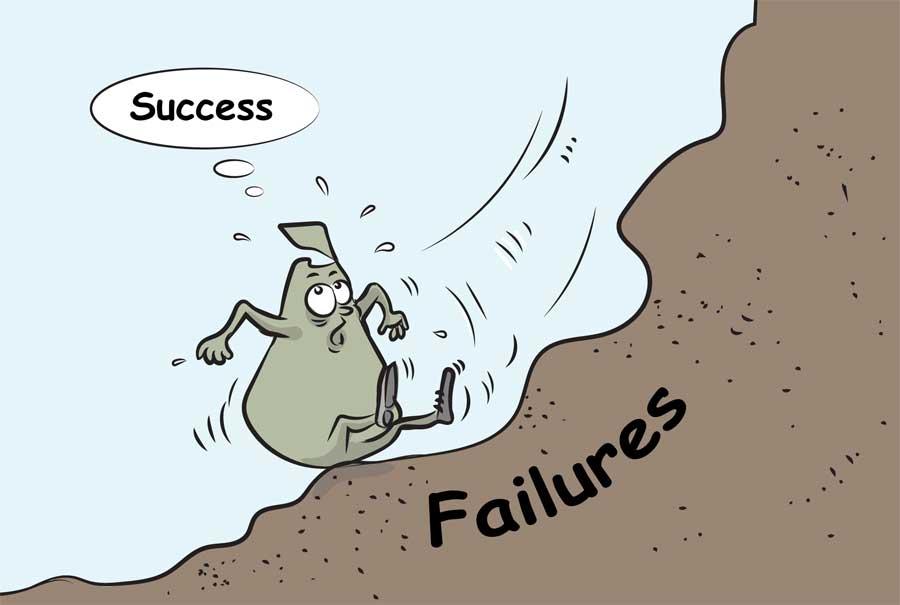Reply To:
Name - Reply Comment

On November 16, 2019 Gotabhaya Rajapaksa was declared winner at the presidential election and assumed the presidency on November 26.
His election came in the aftermath of the Easter Sunday bombings (April 21, 2019), which targetted three churches and three tourist hotels. The attacks were carried out by radicalized members of the local Muslim community.
The inept government of the day not only failed to prevent the attack despite intelligence reports warning of a possible attack, it also pardoned the head of the hardline Bodhu Bala Sena (BBS) a week after extremist gangs attacked Muslim-owned homes, businesses, mosques and shops in apparent reprisal for the Easter bombings. The attacks left the Muslim community in fear and isolation
The tourist trade - a major income earner - also received a knockout blow.
These were some of the problems incoming president Rajapaksa inherited as he assumed the presidency. Two years later, and until now, the perpetrators of the Easter Sunday attack have not been brought to justice, the findings of the commissions of inquiry have not been released and the Muslim community remains estranged....
In March 2020, the first domestic cases of COVID-19 were reported. Government rapidly scaled-up containment measures. These measures, combined with rigorous contact tracing, as well as quarantine and isolation, ensured that the first wave was contained successfully. Only 3,380 cases and 13 deaths had been reported by September 30, 2020.
However, government failed to control a second wave of infections and a rapid increase in numbers during the last quarter of 2020 spread via an outbreak in a garment manufacturing establishment.
According to WB statistics of the total 88,238 cases reported up to March 15, 2021, approximately 96% have been reported since October 2020.
Despite its best efforts, the government also failed the students of the country. Most of the schools in the country are maintained by the government as a part of the free education system. Currently there are 10,012 government schools with a student population of 4.2 million according to the ministry of education figures. In its efforts to battle the Covid-19 pandemic, schools remained closed.
To ensure students would not be bereft of their education, government introduced a scheme of distance learning/online education. Unfortunately, going by government’s own statistics, only 22% of the island’s households have access to IT facilities. This means over 75% of the country’s children have been cut off from the education system.
Even today this shortcoming has not been corrected. To make matters worse, teachers’ salary anomalies have been left unattended. Teachers are on strike and online classes too have been suspended. Government claims it does not have funds to correct the anomaly. A major failure on the part of government regarding children’s education.
The lockdowns and other measures taken to combat the Covid-19 pandemic has led to growing poverty among a large mass of the people. A World Bank (WB) survey revealed that with jobs lost and earnings reduced, the $3.20 (approx. Rs. 640/- per day) poverty rate is projected to have increased from 9.2% in 2019 to 11.7% in 2020.
According to this survey, more than half the working population suffered a market shock, primarily in the form of earnings losses (around 30%). With jobs lost and earnings reduced, poverty increased significantly in 2020. Over 500,000 people are expected to have fallen into poverty. Extreme poverty (as measured by the US$1.90 a day-poverty line) is projected to have doubled from 2019 levels according to the WB.
To mitigate the impact of the pandemic on the poor and vulnerable, the government implemented several livelihood support programme. But, while a large amount of resources was mobilized for these measures, they resulted in small average transfers per household because coverage was very broad.
The COVID-19 crisis induced widespread losses in livelihoods, leading to a significant increase in poverty. The sharp economic slowdown is estimated to have increased the US$3.20 (approx. Rs. 640/-) poverty rate from 9.2% in 2019 to 11.7% in 2020, leading to more than 500,000 additional poor people.
As though this situation were not bad enough, government has completely failed to lighten the burdens heaped on the people. Today, despite growing poverty in the country, government has raised prices of basics - from foodstuffs to milk foods, to fuel to LP gas and every necessity way beyond the reach of the masses.
While the proverb says ‘failures are the pillars of success’, failures seem to have become successive pillars in the case of government’s efforts to combat the fallout of the Covid-19 pandemic.